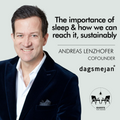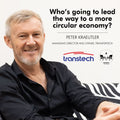DIGITALIZATION IN THE FASHION INDUSTRY
Is it really sustainable? Could it become ethical?
The world we live in has been infiltrated by digital solutions and artificial realities. These criss-cross, merge and seep over into almost every sphere.
Instagram has replaced photo albums and portfolios of work. Video calling has become the new-age “evening spent with friends.”Virtual Reality has changed the gaming terrain.
Indeed, you can hop onto a spaceship and explore several far-away planets, each in different galaxies, before lunchtime on a Saturday, wearing nothing but your bathrobe and a pair of VR glasses.
And the fashion industry is already within a full-fledged digital revolution. But how exactly are digitalization and technology moving this already fast-paced industry?
Photo by Ines Alvarez Fdez from Unsplash
OUR COLLECTION PRIORITIZES CRAFTMANSHIP
Karim Guest New York and the collection of designers at THE GUESTLIST epitomize slow fashion that is gentler to the environment, supports social responsibility, and champions the United Nations’ Sustainable Development Goal of sustainable consumption and production by 2030. Our collection prioritizes craftmanship, quality over quantity, and is created on a made-to-order basis.
Photo by Ines Alvarez Fdez from Unsplash
Fashion, at its root, is an art form.
Designers place pencil to paper, select an appropriate textile, and combine these, with flair and finesse, into a garment. And, while so many artists are making the transition to digital art, it stands to reason that fashion design and construction can be transferred onto digital platforms too.
Image property of CLO3D
Platforms have been developed that allow fashion designers to not only create rough sketches and mock-ups of their designs - but even go so far as to create instant, digital renderings. CLO is a software that has been created to assist with the digitalization of every step of the design process, right up until the final construction of the garment. It even goes so far as to render a digital sample image or video, avoiding any unnecessary back and forth, wasted materials, and travel expenses.
FASHION, AT ITS ROOT, IS AN ART FORM.
Designers place pencil to paper, select an appropriate textile, and combine these, with flair and finesse, into a garment. And, while so many artists are making the transition to digital art, it stands to reason that fashion design and construction can be transferred onto digital platforms too.
Image property of CLO3D
Platforms have been developed that allow fashion designers to not only create rough sketches and mock-ups of their designs - but even go so far as to create instant, digital renderings. CLO is a software that has been created to assist with the digitalization of every step of the design process, right up until the final construction of the garment. It even goes so far as to render a digital sample image or video, avoiding any unnecessary back and forth, wasted materials, and travel expenses.
This means that any necessary adjustments can be made to the garment as though entirely new samples are created each time, therefore expanding the possibilities of the design process. This outshines the traditional manner of doing things in that the design process becomes quicker, more efficient and more cost-effective. Designers no longer need to wait for garments to be produced to make slight adjustments. They are able to get as close as possible to the final product before starting their sampling.
DIGITALIZATION REACHERS FURTHER THAN JUST DESIGNING
3D printing has recently been used to create fast, sustainable, and intricate garments. Julia Daviy - an innovator and designer in her own right - has paved the way for 3D printing within the realm of fashion production. Motivated by the need to eliminate waste in manufacturing, Daviy created an entire collection utilizing a 3D printer in 2018.
This means that any necessary adjustments can be made to the garment as though entirely new samples are created each time, therefore expanding the possibilities of the design process. This outshines the traditional manner of doing things in that the design process becomes quicker, more efficient and more cost-effective. Designers no longer need to wait for garments to be produced to make slight adjustments. They are able to get as close as possible to the final product before starting their sampling.
DIGITALIZATION REACHERS FURTHER THAN JUST DESIGNING
3D printing has recently been used to create fast, sustainable, and intricate garments. Julia Daviy - an innovator and designer in her own right - has paved the way for 3D printing within the realm of fashion production. Motivated by the need to eliminate waste in manufacturing, Daviy created an entire collection utilizing a 3D printer in 2018.
Using elements such as 3D printed lace, mixed filaments, and architectural-like structuring, her collection has since grown to include a range of digitally designed and 3D printed skirts, 3D printed “leather”, and - more recently - a range of luxury handbags. She has, undoubtedly, opened the doors of sustainable fashion design to new, unexpected, solutions and innovations. Her creations also demonstrate how customization will be taken for granted in the future. It will not be long before a client could scan in their dimensions, and have pieces made to fit their physique - better than a glove.
Using elements such as 3D printed lace, mixed filaments, and architectural-like structuring, her collection has since grown to include a range of digitally designed and 3D printed skirts, 3D printed “leather”, and - more recently - a range of luxury handbags. She has, undoubtedly, opened the doors of sustainable fashion design to new, unexpected, solutions and innovations. Her creations also demonstrate how customization will be taken for granted in the future. It will not be long before a client could scan in their dimensions, and have pieces made to fit their physique - better than a glove.
MADE-TO-MEASURE KNITWEAR
Another brand that has taken the digital approach to garment construction, with an added personal touch, is New Industrial Order. Inspired by the idea that everyone has their own genetic code, owners Rosanne Van Der Meer & Annelie Ansingh create custom garments for their customers using a personalized code.
Their 3D Knitwear is “made to measure”, created specifically for each customer as per their specifications. The garments are then constructed using technology known as KnitCloud - essentially using 3D knitting machines to create whole garments. While innovative, this form of fashion production has an exceptionally fast turn-around-time, which, if not monitored, could lead to unsustainable growth.
Image property of New Industrial Order
THE REALM OF DIGITAL FASHION DESIGN HAS REACHED THE POINT OF NO RETURN. AND BY NO RETURN- IT IS LIKELY TO STAY ENTIRELY DIGITAL.
At the virtual cutting-edge, The Fabricant has established itself as an Haute Couture house in Amsterdam that specializes in only digital designs. Customers can purchase a “garment” and, having sent images of themselves, can have the design digitally rendered into their images - as though they are wearing it. “We envision a future where fashion transcends the physical body”, they explain, “Showing the world that clothing does not need to be physical to exist.”
This revolutionary idea could be taking things one step too far. While there is an entire digital cosmos waiting to be explored, the question arises about the ethics behind this sort of fashion. Is a product truly sustainable if the technology used to create it (even in a digital format) compromises the environment by polluting it with e-waste, or is unrecyclable, as so much of the technological tools we use today are? Is the need to possess a digital form of a garment so overpowering that it can overlook the pollution that the hardware might cause? And this doesn’t even take into consideration the livelihoods, working conditions, etc., of those producing the hardware that is used to create and interact with such digital interfaces. This takes the question of sustainability and ethics into a whole new realm too.
Image property of Fabricant
This revolutionary idea could be taking things one step too far. While there is an entire digital cosmos waiting to be explored, the question arises about the ethics behind this sort of fashion.
Image property of The Fabricant
Is a product truly sustainable if the technology used to create it (even in a digital format) compromises the environment by polluting it with e-waste, or is unrecyclable, as so much of the technological tools we use today are? Is the need to possess a digital form of a garment so overpowering that it can overlook the pollution that the hardware might cause? And this doesn’t even take into consideration the livelihoods, working conditions, etc., of those producing the hardware that is used to create and interact with such digital interfaces. This takes the question of sustainability and ethics into a whole new realm too.
It is clear that technology and digitalization are venturing down an unpredictable path that goes hand-in-hand with sustainable fashion. Allowing for construction with limited waste, using materials that are environmentally conscious as well as biodegradable, and creating more time-conscious and efficient production lines is just the start. We are at the forefront of the infinite digital realm, and, while the fashion industry might have refuge within the bounds of science and technology for now, the questions lie very much open-ended when it comes to a sustainable future for all.
so much within the realm of fashion that requires the details of human touch
THE GUESTLIST favors the genuine experience of wearing your own, handcrafted, made-to-order cashmere item. With the utmost care and attention taken at every step, the personal touch that you are treated to at THE GUESTLIST is contained in every stitch. While the digitalization of the manufacturing process in fashion creates a seamless and sustainable production line, there is so much within the realm of fashion that requires the details of human touch. Indeed, garments are meant to be felt on your skin, to be lived in, to be experienced in the most tactile ways possible. And for now, not much is changing in that regard. As humankind, we have, and will likely continue for many years to have, a basic need for clothing.
THE GUESTLIST favors the genuine experience of wearing your own, handcrafted, made-to-order cashmere item. With the utmost care and attention taken at every step, the personal touch that you are treated to at THE GUESTLIST is contained in every stitch.
Your pieces from THE GUESTLIST are made to last you for life, and you can rest assured that the small team that create your item are committed to producing the highest quality garment, just for you. Our focus on sustainability lies in reducing the fast fashion mentality, and by taking the time to ensure that the textiles are ethically sourced and cared for using sustainable washes. Creating fashion that lasts, embracing technological advances in a slow and deliberate manner that upholds our values, without adding to the strain on the environment, is our priority.
While the digitalization of the manufacturing process in fashion creates a seamless and sustainable production line, there is so much within the realm of fashion that requires the details of human touch. Indeed, garments are meant to be felt on your skin, to be lived in, to be experienced in the most tactile ways possible. And for now, not much is changing in that regard. As humankind, we have, and will likely continue for many years to have, a basic need for clothing.
Your pieces from THE GUESTLIST are made to last you for life, and you can rest assured that the small team that create your item are committed to producing the highest quality garment, just for you. Our focus on sustainability lies in reducing the fast fashion mentality, and by taking the time to ensure that the textiles are ethically sourced and cared for using sustainable washes. Creating fashion that lasts, embracing technological advances in a slow and deliberate manner that upholds our values, without adding to the strain on the environment, is our priority.







